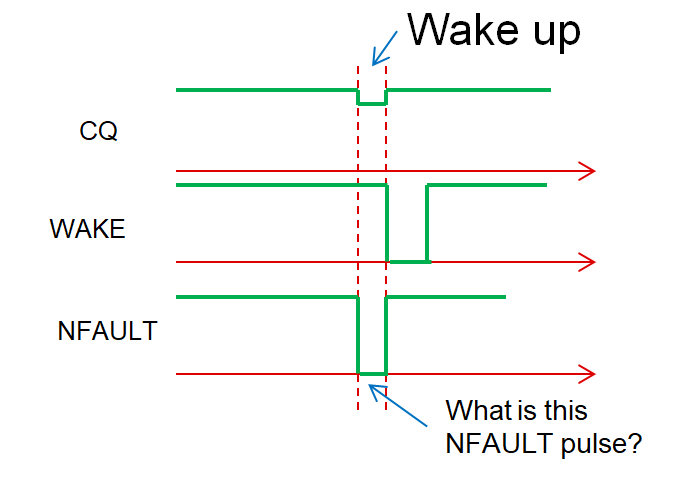Hello
My customer has an question for NFAULT behavior during wake-up pulse in TIOL111.
TIOL111 on their board detects wake-up pulse correctly, but NFAULT signal also goes to low at the same timing as the wake-up pulse like the below figure.
They can see this behavior only if ILIM_ADJ is open. It never happen if ILIM_ADJ is connected to L-.
What do you think is the root cause of this NFALUT strange behavior?
Regards,
Oba


